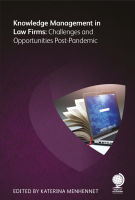The editorial process explained
10 December 2021

Globe Law and Business Ltd, Managing Editor
In the second of a new series of short blog posts on how to publish a professional book, our Managing Editor, Lauren Simpson, offers a step by step guide to the editorial process once you have delivered your manuscript.
So, you’ve had your book commissioned, you’ve signed the contract, and you’ve shed blood, sweat and tears over the course of many sleepless nights before triumphantly delivering your manuscript. (On time, naturally!)
But what happens next?
Writing (or contributing to) a book is just the first stage in the publishing journey; and while editorial and production processes vary from publisher to publisher, the sequence of events from manuscript delivery to published book is broadly similar.
The process, step by step
As a rule, these are the main stages in the publishing process:
- Manuscript assessment: meeting the brief
This involves the publisher’s initial assessment of your work, with suggestions for improvement in terms of coverage, length, key topics, chapter structure, running order, table of contents, etc. It is an evolutionary process and there will be several refinement stages.
- Developmental/structural editing: getting things in shape
This stage involves giving more detailed feedback to authors. At Globe Law and Business, this is carried out by the commissioning team, alongside the consulting editor(s) where relevant, and with input from the managing editor as required. The main purpose of this stage is to ensure that authors and contributors are familiar with house style, readership, headings hierarchies, book layout, and so on. In tandem with this stage, draft covers are designed and information about forthcoming book is added to our website.
- Copy editing (is king)
Copy editing is the single most important component of the editorial process and focuses on the detail, accuracy and completeness of a manuscript. It includes not only checks of grammar, spelling and punctuation but also incorporates even further refinements to the two stages above. The key aim of copy editing is to ensure that: (i) whatever appears in public is factually accurate; (ii) there is no repetition or contradictory material; and (iii) the manuscript contains no embarrassing mistakes or errors/omissions which might result in legal problems.
It is during the copy-editing phase that the most queries for authors arise – and questions typically relate to content, style, gaps in the text, technical inconsistencies, factual errors, repetition and problems with citations, sources and footnotes. It is also at this stage that the editorial team will flag potential problems relating to permissions: specifically, the inclusion of graphics, charts and tables, the use of third-party material and potential plagiarism. At Globe Law and Business, it is an author’s responsibility to ensure that written permission from the copyright owner has been obtained before we can reproduce any third-party material – and this can delay the whole process if not sorted out early enough.
In short, how much copy editing a book requires will depend on the following factors:
- the complexity of the subject matter;
- the quality and consistency of the writing; and most importantly
- whether authors have followed the publisher’s style guide.
- Typesetting: layouts, designs and proofs
Once the copy editing is complete, any permissions issues are resolved and all charts, tables and illustrations have been supplied in a high-resolution format, the design team then sets to work on laying out the manuscript in accordance with the book/series style guide. Proofs are then produced for checking.
- Proofreading – also known as ‘polishing the silver’
This is the final line-by-line check of a manuscript and provides an opportunity to pick up anything overlooked or unresolved at earlier stages. At Globe, consulting editors review pre-press proofs and there are several in-house iterations, especially on more complex books. It is important to stress that the proofing stage is not the time to start moving tables around or deleting footnotes! Only minor/critical amends should be made at proof stage – anything else should be made during the copy-editing phase.
- Finalising files for press: the finishing line is in sight!
Once proofreading is complete, the editorial and production teams can then start finalising files for press. It is at this stage that elements like indexes and covers are prepared and finalised. Then, when everyone is happy, the book goes off to the printer!
Keeping on track
Timescales for the completion of editorial and production stages varies. At Globe Law and Business, it is typically four months from the commencement of copy editing to the delivery of files to the printer for a multi-authored book. Titles in our Special Reports series can usually be produced in approximately three months. Of course, there are plenty of things that can upset the apple cart during that time – and by sticking to the schedules and guidance provided throughout, authors can ensure that books are produced on time and within budget.
Get in touch
- Please do feel free to email me with any questions at Lauren@globelawandbusiness.com.
- Have a new title idea? Contact sian@globelawandbusiness.com with any potential new ideas, Katerina Menhennet (law firm management) on katerina@globelawandbusiness.com or Alex Davies (Ark Publishing) on alex@globelawandbusiness.com.
- Want to read the first blog in the series on how to publish a professional title? click here
Lauren Simpson is Managing Editor at Globe Law and Business, the independent publisher for international legal and business professionals.













Any comments - send us an email